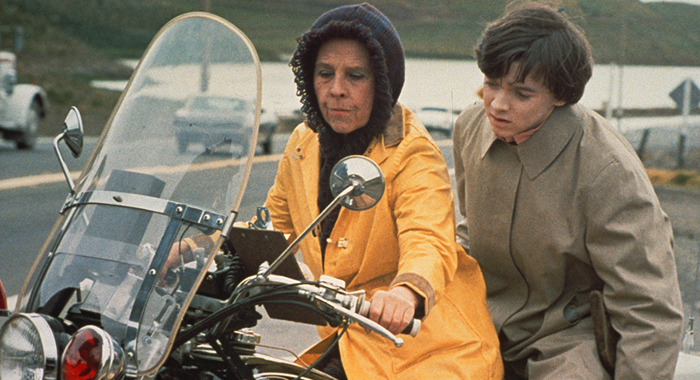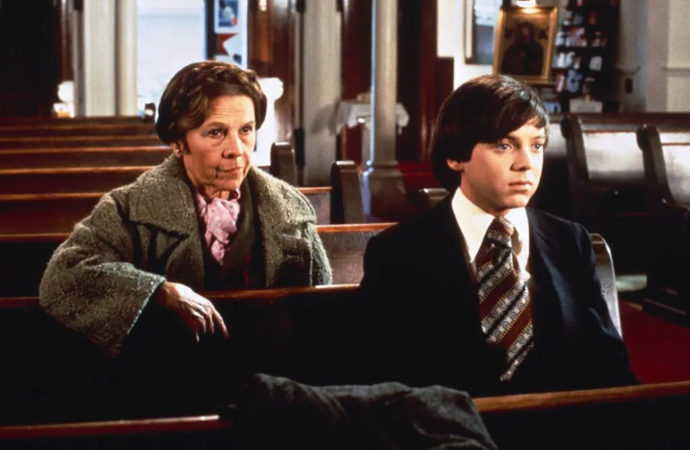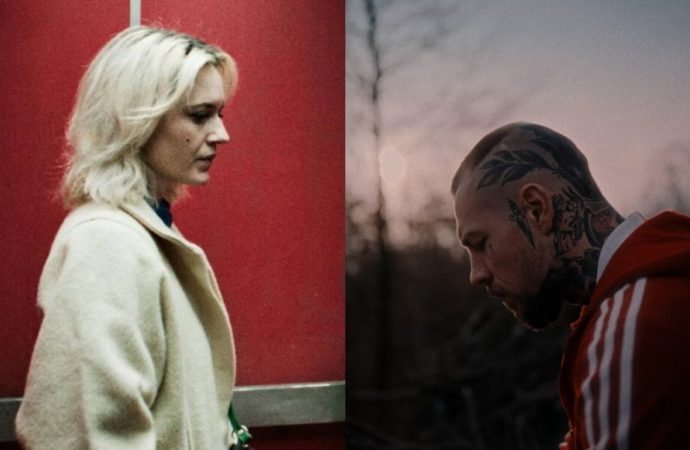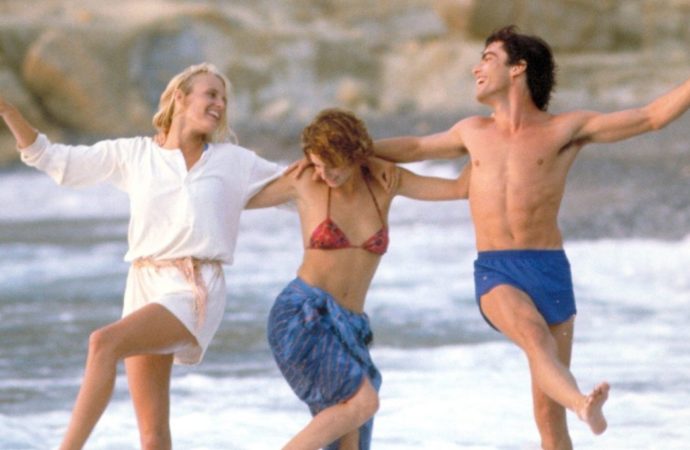Despite being a film that begins with a suicide, albeit a simulated one, Harold and Maude is an ode to life and to living it with all its consequences to the end. Despite being a flop at the time of its release, the film became a cult film and became the most important film of its director, Hal Ashby, along with Being There.
The original idea, the creation of UCLA student Colin Higgins, was part of his film school thesis, but he turned it into a screenplay —which after the premiere became a novel and then a play— and while working as a pool cleaner for a Paramount boss, he showed it to his wife and got them to buy it.

The story was simple, Harold is a young man in his early twenties who lives in a world of his own, not fitting in with society. He has no friends and his only two hobbies are repeatedly faking his suicide and attending funerals to feel closer to death. It is at one of the latter that she meets 79-year-old Maude, who also attends funerals of strangers, but not to wallow in death, but to feel more alive. They will meet and fall in love, with the older one teaching the younger one the joy of living and, getting metaphysical, the meaning of life. Maude, despite her age, represented many of the ideals of the 1960s, freedom, love, opposition to war, although she also had her own peculiarities, such as her mania for borrowing other people’s cars and driving like a kamikaze.
Hal Ashby, a 42-year-old hippie at heart, was the perfect director for this material, because he agreed with the essence of hippieism, but he wasn’t so naïve as to think that putting flowers in his hair would change society, and that comes through in the film, which is a furious attack on all the fundamental institutions of society, the family, the military, religion and even psychiatry. But perhaps more importantly, Ashby’s father had committed suicide when he was 12, and this film spoke to him more closely than any other. The director accepted the offer but made sure that Higgins, who wanted to direct it himself but the studio refused, gave his blessing and could be on the set, learning alongside him.
Harold and Maude is a eulogy to all those who live, to paraphrase Patti Smith, outside society. Ashby knows how to annoy well-meaning society, first with that mother who doesn’t seem to understand her son, whom she keeps introducing to potential partners, despite the fact that Harold keeps scaring them with his elaborate fake suicides. Priceless is that moment in which, after a terrified flight from a possible girlfriend, Harold turns around and looks with satisfaction at the camera, seeking the complicity of the spectator, something improvised by Bud Cort, the actor in charge of bringing him to life, and which Ashby left as a tribute to his beloved French New Wave.
But Harold and Maude also takes a swipe at the army, through Harold’s uncle, or the psychiatrists, although the clearest blow is delivered by religion, with the priest talking about how sickening he finds the union of the turgid flesh of a young man like Harold with Maude’s decrepit breasts, all this long before the pederasty scandals had come to light….
The amazing thing is that, to Ashby’s martyrdom, almost everyone sided with the religious fanatic. For a 79-year-old man to sleep with a 19-year-old girl had a pass (as that unscrupulous, soulless Logan Roy knows) but the other way round was too much for a sexist, sexist, ageist society. The funny thing is that Ashby had already succeeded in aborting Harold and Maude’s producer, Robert Evans, from cutting the scene in the editing room, which he did by putting part of the footage of the scene in the trailer announcing the film.
The scene couldn’t have been more inoffensive, a kiss gave way to a cut and then the two protagonists were seen lying on the bed, once the sex was over, with Bud Cort’s strange face glowing for the first time in the film, while he blew some bubbles (impossible for a guy as quirky as him to fall into the cigarette cliché…) and watched Maude sleep peacefully.
https://www.youtube.com/watch?v=kQK8I6jtG_8
The Graduate was supposed to have served to break that particular taboo, that of a young man with an older woman, but when you consider that Anne ‘Mrs Robinson’ Bancroft was only six years older than Dustin Hoffman you might understand why casting actors who were actually the ages of their characters was considered so threatening.
Bud Cort, who played Harold, had not yet turned 23 when the film was shot and had a totally peculiar appearance, he looked even younger, but with a very strange look, as if the Camilo Sesto of recent times was a teenager. Maude was played by Ruth Gordon, an actress who was 75 years old and born in the 19th century. The new generations of the time remembered her mainly for having given life to the terrifying Minnie Castevet, Mia Farrow and John Cassavettes‘ neighbour in The Devil’s Seed, but Gordon’s CV included such curious things as having been nominated for an Oscar for best original screenplay for her work, together with her second husband, in Adam’s Rib, the film starring Katherine Hepburn and Spencer Tracy in 1949.
Still, the first line that rang out in the whole film, I guess you think that’s pretty funny, uttered by Harold’s mother after one of his fake suicide attempts, was perfect for describing the reaction of the critics of the time, with a few exceptions, who were quick to trash it, one of them going so far as to say that Harold and Maude was about as funny as watching an orphanage on fire.
Maybe part of its bad press was because Harold and Maude was released in the middle of Christmas celebrations with family spirit at its peak, maybe Paramount got the wrong approach, instead of selling it as what it was, a non-conformist, counter-cultural film that spoke to the young, they tried to sell it as a touching story of a friendship between a young man and an old woman for all audiences…. As a result, the film only stayed in cinemas for one week.
Ashby was devastated, but no less proud of his creature. He was also a bit of a visionary, declaring shortly afterwards: I’m very proud of everything that’s on screen and I think it will find an audience in the future, or at least the attention it deserves. He was absolutely right, the film quickly became a cult object and was eventually resurrected.
Harold and Maude, without being perfect, has left its mark on the work of the most varied and original directors, the most obvious being in the films of Wes Anderson, Harold being a clear antecedent to the Max of Rushmore Academy, as well as many other things, such as the use of the soundtrack, which in this film is mainly provided by Cat Stevens. The director of The French Dispatch has never hidden his admiration for the film and even gave Bud Cort a small part in Life Aquatic.
The fact is that 50 years after its release, the film is still as vital and funny as it was then, and at the end of the film, when Harold learns that Maude has decided to commit suicide after her 80th birthday, suicide and death no longer seem like a joke to him, he has learned to live, and he suffers at the thought of losing Maude.
Although the director plays with the idea of Harold’s possible suicide, this time real, by driving his car off a cliff, Harold reappears playing, and dancing, on the banjo to the song Maude taught him on the banjo, Cat Stevens’ “If You Want To Sing Out, Sing Out”. He has learned the lesson Maude taught him, to see that life is for living it better (as Los Fabulosos Cadillacs would say) and that this also entails accepting death as inevitable, not as something negative, but as part of the cycle of life.
We are going to die, it is inevitable, so Ashby and Higgins, through Harold and Maude, tell us that the best thing to do is to stop wallowing in it and go out and enjoy what we have left:Well, if you want to sing out, sing out, And if you want to be free, be free, ‘Cause there’s a million things to be, You know that there are.









No one has posted any comments yet. Be the first person!